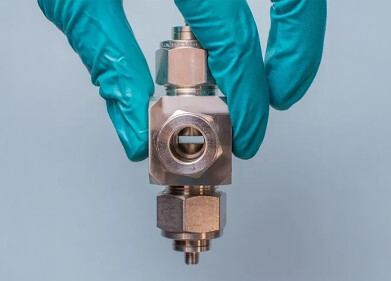Analytical Instrumentation
2019: The Year of Gasoline Analysis on the VUV Analyzer™ Platform
Feb 19 2020
VUV Analytics™, pioneers of developing analytical tools based on vacuum ultraviolet (VUV) detection technology, is dedicated to providing fast, easy, and accurate methodologies for use in the hydrocarbon analysis space. The year 2019 alone is testament to that with the launch of the VUV Analyzer Platform for Fuels, the introduction of a new method for jet fuel analysis (ASTM D8267), the global reveal of Verified Hydrocarbon Analysis™, and the completion of the ILS for ASTM D8071 resulting in final approval and publication of the method.
At the December 2019 ASTM meeting in New Orleans, Dan Wispinski, Standards Methods Development Manager of VUV Analytics, had the pleasure of presenting updates to the D02.4L GC committee on ASTM D8071-19 on the significant updates and progress made since the method was approved with its formal research report and precision statement. Final publication of the standard occurred in September 2019. This was a major milestone for VUV Analytics as this method was first approved in early 2017 and represented the culmination of a tremendous amount of work.
Why is ASTM D8071 significant to the market?
This method represents a substantial advancement in accuracy for gasoline analysis because it uses spectral validation. Since compounds of interest have unique spectral shapes, they can accurately be identified using D8071 (GC-VUV). Additionally, these unique spectra will have similar shapes based on their class. This means that they can be easily and accurately combined by class, which is critical to PIONA analysis. Better data directly translates to better business decisions.
It is also easy-to-use. This is true for a variety of reasons. Unlike other approaches, this method is completely automated. All the user must do is load their samples, acquire the data, and press analyse. There isn’t any sample preparation -- no more wasting time with unnecessary work.
Additionally, this method covers a broad set of parameters. In fact, this single method can be used to replace many of the methods shown in Table 1. This reduces complexity in the laboratory, increases productivity, reduces costs, and allows for better utilization of laboratory personnel. With the most recent publication, this method now includes the EPA referee correlation equations which are automatically reported through the VUV Analyze™ software.
What’s next?
With success of ASTM D8071-19 in the United States, VUV Analytics initiated a Canadian General Standards Board (CGSB) study to determine an ASTM D6708 correlation to the referee Canadian Detailed Hydrocarbon Analysis (DHA) method. This means ASTM D8071 has the potential to be used in place of the time intensive DHA method used today and will be balloted into CGSB gasoline specifications and Canadian environmental regulations. Initial results are very promising and indicate that ASTM D8071-19 has very favorable precision comparisons to these parameters.
Work on gasoline standard methods is not stopping as VUV Analytics is actively developing IP630, a new method for gasoline analysis for use in Europe. This method is based on D8071 and extends to other oxygenates, including ethers, so stay tuned.
Digital Edition
PIN 25.5 Oct/Nov 2024
November 2024
Analytical Instrumentation - Picturing Viscosity – How Can a Viscometer or a Rheometer Benefit You? - Sustainable Grease Formulations: Evaluating Key Performance Parameters and Testing Method...
View all digital editions
Events
Dec 03 2024 Dusseldorf, Germany
Dec 08 2024 Anaheim, CA, USA
Turkey & Black Sea Oil and Gas
Dec 11 2024 Istanbul, Turkey
Dec 19 2024 Aurangabad, India
Jan 20 2025 San Diego, CA, USA
.jpg)
.jpg)


















